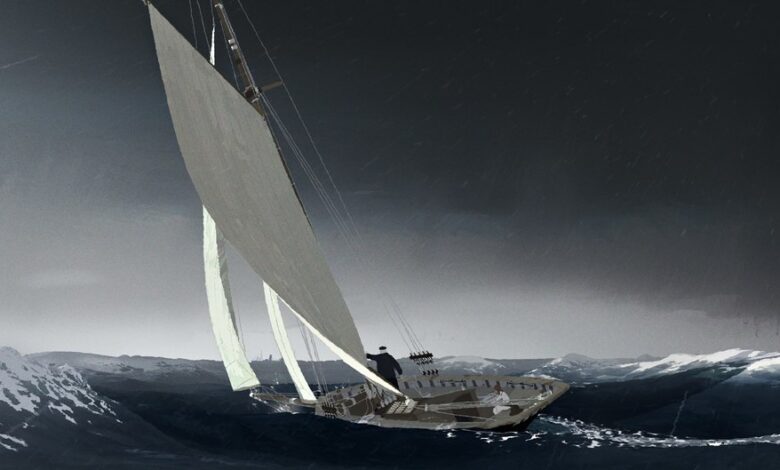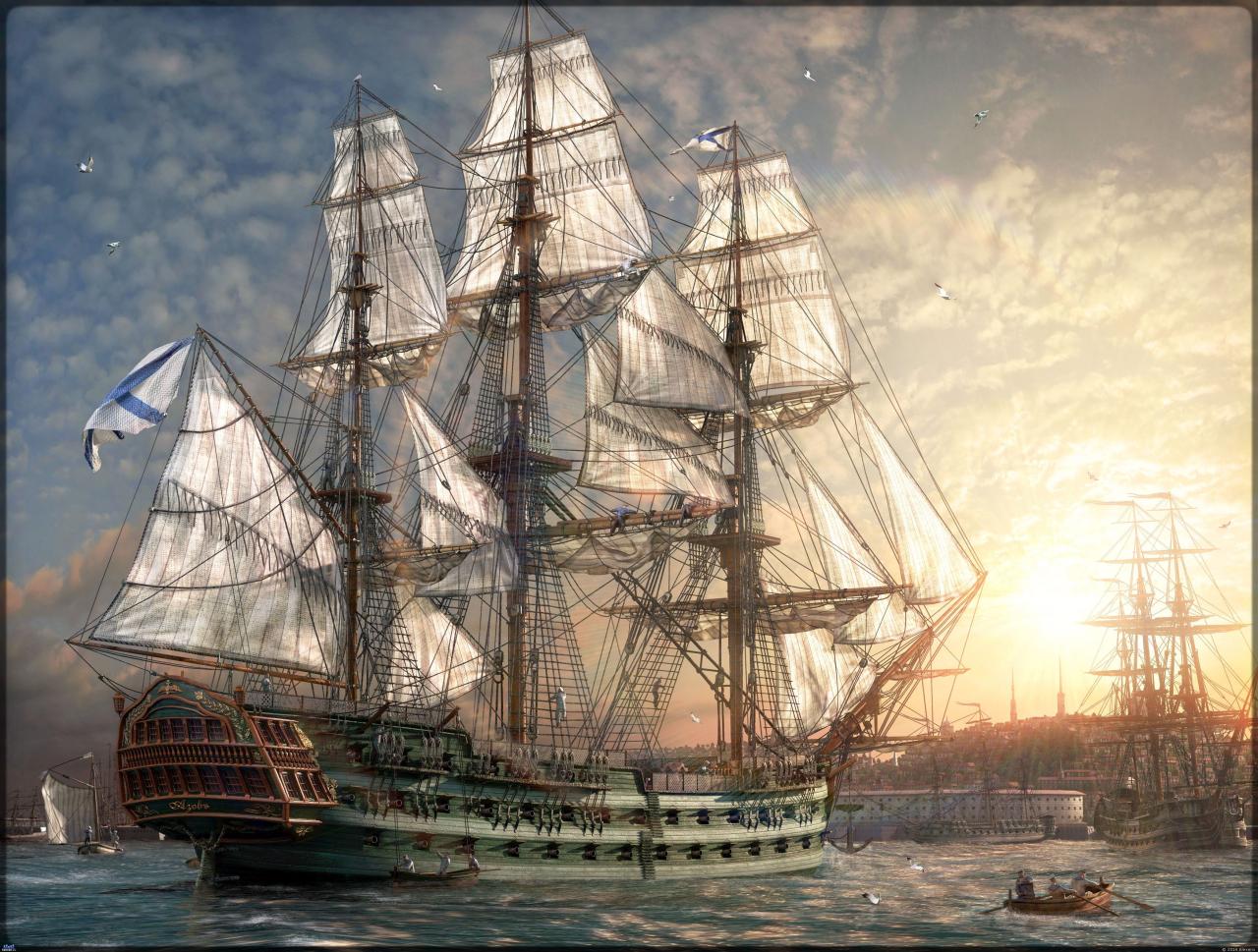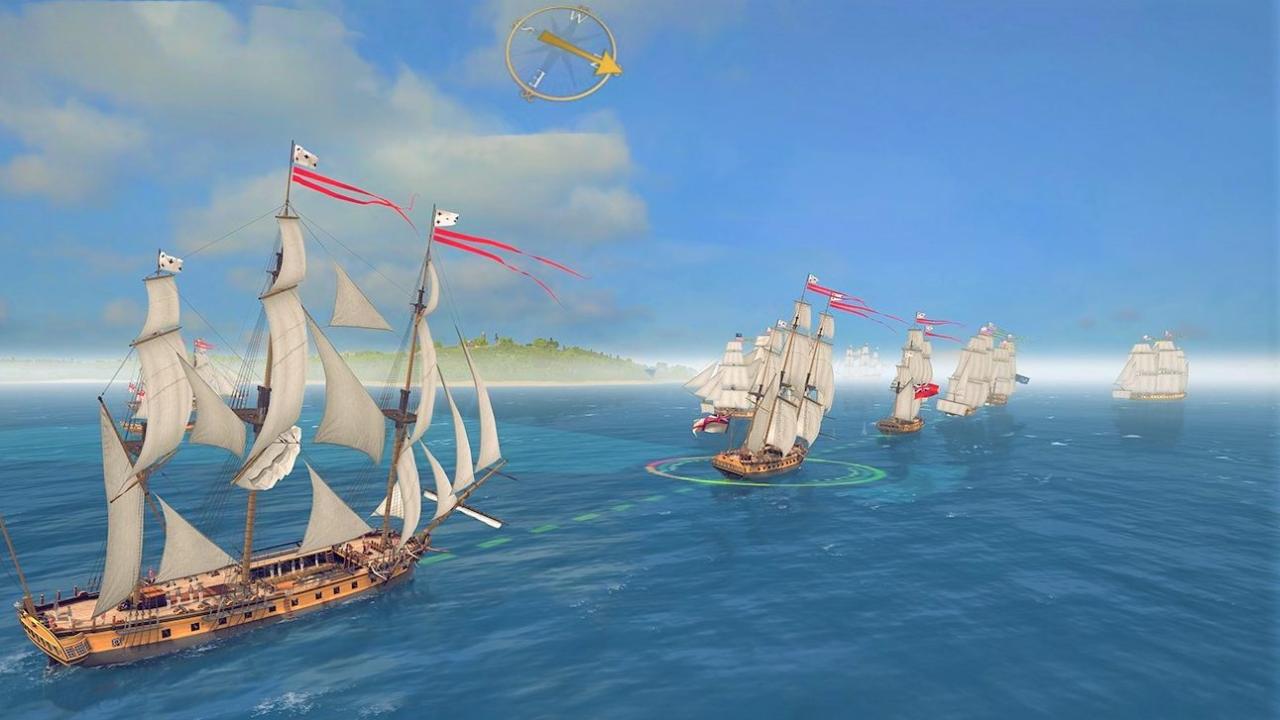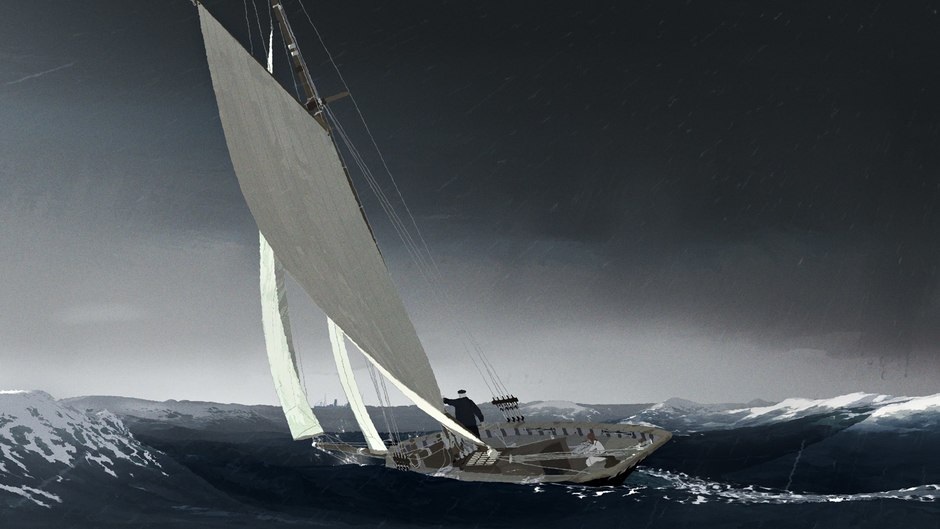
A New Age of Sail Begins
A new age of sail begins, not with creaking wooden hulls and tattered sails, but with sleek, technologically advanced vessels harnessing the power of wind and sun in unprecedented ways. This isn’t your grandfather’s sailing; we’re talking about a resurgence of maritime transport and recreation driven by innovation, sustainability, and a renewed appreciation for the ocean’s power. Prepare to be amazed by the possibilities this new era unlocks.
From autonomous sailing systems guided by AI to hybrid propulsion systems blending wind power with solar and other renewable sources, the future of sailing is both efficient and environmentally conscious. This shift promises to revolutionize global trade, boost coastal economies, and offer exciting new opportunities for adventure and exploration. But with this progress comes the need to address challenges in maritime safety and environmental responsibility – a crucial aspect we’ll delve into.
Technological Advancements in Sailing

The age of sail is experiencing a renaissance, driven by advancements in materials science, automation, and energy technologies. No longer confined to traditional wooden hulls and canvas sails, modern sailing vessels are pushing the boundaries of performance and efficiency, offering a glimpse into a future where sailing is both sustainable and technologically sophisticated. This new era blends the romance of traditional sailing with the precision and power of modern engineering.
This evolution is fueled by a convergence of several key technological areas: the development of advanced materials, the integration of sophisticated automation and AI systems, and the exploration of diverse and efficient propulsion methods.
Advanced Materials in Vessel Construction
Modern sailing vessels are increasingly incorporating lightweight yet incredibly strong materials like carbon fiber and advanced composites. These materials allow for the construction of hulls and masts that are significantly lighter than their traditional wooden or steel counterparts, resulting in improved speed and maneuverability. For instance, the hulls of many racing yachts are now constructed from carbon fiber prepreg, a material offering exceptional strength-to-weight ratio, allowing for greater speed and responsiveness.
Furthermore, the use of these materials enables the creation of more complex and hydrodynamically efficient hull shapes, further enhancing performance. Imagine a sleek, almost futuristic vessel, its hull a testament to the precision of modern engineering, its curves optimized for minimal drag and maximum speed. The integration of advanced resins and manufacturing techniques allows for seamless integration of structural elements, reducing weight and improving overall structural integrity.
Automation and AI in Modern Sailing
Automation and artificial intelligence are transforming the sailing experience, from routine tasks to strategic decision-making. Automated sail-handling systems, for example, can adjust sails based on wind conditions and pre-programmed sailing strategies, optimizing performance and reducing the workload on the crew. AI-powered navigation systems can analyze weather patterns, currents, and other data to suggest optimal routes, minimizing travel time and fuel consumption.
Imagine a system that constantly monitors wind speed and direction, automatically adjusting sail trim for optimal performance, freeing the crew to focus on other aspects of the voyage. This level of automation is particularly beneficial for solo sailors or those undertaking long-distance voyages, reducing the demands on the crew and enhancing safety. Beyond sail handling, AI can also be utilized in route planning, predicting weather patterns with higher accuracy than traditional methods, and even assisting in collision avoidance.
So, a new age of sail begins, right? Think sleek, fast ships, maybe even autonomous ones. But the winds of change can be unpredictable. I just read this crazy article about how, according to US intelligence, Huawei was planning to sneak unmarked smartphones into the US via Mexico. It makes you wonder about the unseen currents impacting even the most advanced technologies, reminding us that the “new age of sail” might face some unexpected storms.
Propulsion System Efficiency: Wind, Solar, and Hybrid Options
The efficiency of propulsion systems is a critical factor in the new age of sail. While wind power remains the primary source of propulsion, advancements in sail design and materials are constantly improving its effectiveness. The integration of solar power provides an auxiliary source of energy for onboard systems, reducing reliance on fossil fuels and enhancing sustainability. Hybrid systems combine wind and solar power with electric motors, offering a versatile and efficient propulsion solution.
For example, a vessel might utilize its sails in favorable wind conditions, supplementing with solar power for onboard electricity, and switching to an electric motor for maneuvering in calm conditions or navigating tight spaces. This combination offers significant advantages over traditional sail-only vessels, expanding operational capabilities and reducing environmental impact. The efficiency gains are substantial, especially on long voyages where fuel conservation is paramount.
A new age of sail begins, not with literal ships, but with the innovative spirit of the digital age. However, reckless actions like those suggested in this article, dismantling google is a terrible idea , could sink even the most promising ventures. Such a move would stifle innovation and ultimately hinder the progress of this exciting new era of technological exploration, potentially setting back the very “new age of sail” we’re witnessing.
The development of high-efficiency solar panels and lightweight battery technologies is further enhancing the practicality and effectiveness of these hybrid systems.
Economic and Geopolitical Implications

The resurgence of sailing as a significant mode of transportation and trade presents a fascinating interplay of economic and geopolitical factors. While seemingly a return to a bygone era, advancements in materials science, naval architecture, and renewable energy sources are poised to make a new age of sail surprisingly competitive and impactful on a global scale. This shift holds the potential to reshape international trade routes, energy consumption, and the very balance of power among nations.The potential economic benefits are substantial.
Reduced reliance on fossil fuels translates directly into lower operating costs for shipping companies. This, combined with the potential for autonomous sailing vessels, could significantly reduce labor costs. Furthermore, the environmental advantages of wind-powered transport could unlock access to new markets and partnerships based on sustainability goals. However, the transition won’t be without its complexities and challenges.
Economic Benefits of a Resurgent Sailing Industry
A renewed focus on sailing technology could revitalize port economies worldwide. Ports less reliant on large container ships, for example, could see increased activity supporting smaller, more maneuverable sail-powered vessels. This would create new job opportunities in shipbuilding, maintenance, and logistics. The reduction in fuel costs, a major expense for modern shipping, could also lead to lower prices for consumers, boosting global trade.
Consider the example of container ships currently reliant on extremely high fuel prices; a shift towards wind-powered transport could offer a tangible price reduction on goods, especially those transported across vast distances. This would benefit both consumers and businesses.
A new age of sail begins, not just with sleek, modern yachts, but with a renewed spirit of exploration. This journey, however, requires navigating complex waters; I was struck by this article asking if hope can beat hatred in Bangladesh, can hope beat hatred in Bangladesh , a question mirroring the challenges we face in charting a sustainable future for sailing and the world.
Ultimately, a new age of sail demands both technological advancement and a profound shift in our collective consciousness, much like the need for positive change in Bangladesh.
Geopolitical Implications of Renewed Maritime Routes
A resurgence of sail could alter global power dynamics. Nations with extensive coastlines and favorable wind patterns could gain a significant advantage in international trade. Countries with expertise in naval architecture and renewable energy technologies are well-positioned to become leaders in this new maritime era. Conversely, nations heavily reliant on traditional fossil fuel-based shipping might face economic challenges as the industry shifts.
For instance, countries currently dominating the global shipping industry through large container fleets might need to adapt rapidly or risk losing their competitive edge. The strategic importance of maritime routes would also shift, potentially leading to new alliances and geopolitical tensions. Control over strategic waterways and the development of advanced sailing technologies would become critical assets in international relations.
Challenges and Opportunities for Different Nations
The transition to a new age of sail will present both challenges and opportunities for different nations. Developed nations with advanced technological capabilities will likely be better positioned to capitalize on the economic benefits. However, developing nations could also benefit from access to more affordable and sustainable transportation solutions. Investment in education and training in the new sailing technologies would be crucial for all nations seeking to participate.
Moreover, international cooperation will be essential to establish common standards and regulations for this new era of maritime transport, ensuring fair competition and sustainable practices. The establishment of international standards for autonomous sailing vessels, for example, would be critical to avoid potential conflicts and ensure safe navigation.
Economic Impact Comparison: Traditional Shipping vs. New Age of Sail
| Method | Cost | Environmental Impact | Speed |
|---|---|---|---|
| Traditional Container Ship | High (fuel, labor, maintenance) | High (Greenhouse gas emissions, pollution) | Relatively High |
| Advanced Sail-Powered Vessel | Lower (reduced fuel, potential for automation) | Low (minimal greenhouse gas emissions) | Moderate (dependent on wind conditions) |
Environmental Considerations and Sustainability
The resurgence of sail, while offering numerous advantages, necessitates a meticulous approach to environmental sustainability. Ignoring the ecological impact would negate many of the benefits of a new age of sail and undermine its long-term viability. This section Artikels strategies for minimizing the environmental footprint of this promising maritime technology.Minimizing the environmental impact of a new age of sail requires a multi-pronged approach, focusing on reducing emissions, managing waste effectively, and promoting responsible resource utilization.
This goes beyond simply using wind power; it encompasses the entire lifecycle of sailing vessels, from construction to decommissioning.
Reducing Carbon Emissions in Maritime Transportation
The primary environmental concern surrounding maritime transport is carbon emissions. While sailing inherently reduces reliance on fossil fuels, further innovations can significantly enhance its environmental profile. Strategies include optimizing hull design for reduced drag, thereby maximizing efficiency and minimizing fuel consumption when auxiliary power is necessary. Furthermore, the incorporation of lightweight, high-strength materials in vessel construction reduces overall weight, leading to improved fuel economy and lower emissions.
Exploring alternative fuels, such as biofuels derived from sustainable sources, for auxiliary engines offers another pathway towards minimizing the carbon footprint. Finally, implementing advanced route optimization systems leveraging real-time weather data can help vessels choose the most efficient and environmentally friendly paths. For example, a cargo ship utilizing optimized sailing routes and auxiliary power only when absolutely necessary could reduce its carbon emissions by up to 40% compared to a traditional fuel-dependent vessel on a similar route.
Waste Management and Recycling on Sailing Vessels
Effective waste management is crucial for preserving the marine environment. A comprehensive system should encompass separate collection points for different waste streams (e.g., plastics, metals, organic waste) onboard sailing vessels. Composting toilets and greywater recycling systems can significantly reduce the volume of waste requiring disposal. Furthermore, partnerships with onshore recycling facilities should be established to ensure proper processing and disposal of collected waste.
Regular audits and inspections can ensure compliance with waste management protocols. For instance, a system employing color-coded bins for different waste types, coupled with regular crew training on proper waste segregation, could dramatically improve recycling rates and minimize the amount of waste ending up in the ocean. This system could be further enhanced by a digital waste management tracking system that monitors waste generation, recycling rates, and disposal methods, allowing for real-time data analysis and continuous improvement.
Social and Cultural Impacts: A New Age Of Sail Begins
A resurgence of sailing, driven by technological advancements and a renewed focus on sustainability, promises not only economic and environmental benefits but also a profound shift in social and cultural landscapes. The romantic image of the sailor, once relegated to the realm of fiction and nostalgia, could be re-envisioned as a viable and appealing career path, attracting a new generation of skilled professionals and adventurers.
Furthermore, the cultural significance of sailing, deeply woven into the fabric of human history, is poised for a modern renaissance, potentially shaping new artistic expressions, social connections, and community building initiatives.The potential social impact of a renewed interest in sailing and seafaring careers is multifaceted. Increased demand for skilled sailors, marine engineers, and related professionals could lead to the creation of new jobs and training opportunities, particularly in coastal communities.
This could revitalize struggling economies and offer young people attractive career alternatives, potentially stemming the tide of rural depopulation. Moreover, the inherent teamwork and problem-solving skills required in sailing could foster a sense of community and shared purpose, both among professional sailors and recreational enthusiasts. Imagine the rise of community sailing programs, fostering inclusivity and providing access to this enriching activity for diverse populations.
This could lead to improved physical and mental well-being, a growing appreciation for the marine environment, and the creation of new social networks centered around a shared passion.
Sailing’s Historical and Modern Cultural Significance
Sailing has played a pivotal role in shaping human civilization, influencing trade, exploration, warfare, and artistic expression throughout history. From the ancient Egyptian reed boats to the mighty clipper ships of the 19th century, sailing vessels have been integral to cultural exchange and technological innovation. This rich legacy can be reimagined in a modern context through initiatives that highlight the historical significance of sailing while promoting its contemporary relevance.
Museums showcasing the evolution of sailing technology and its cultural impact can be revitalized, incorporating interactive exhibits and digital storytelling to engage a wider audience. Artistic expressions, from maritime-themed literature and film to contemporary sculpture and installations, can capture the spirit of adventure and the beauty of the sea, inspiring a new generation to connect with the maritime world.
Furthermore, reviving traditional sailing practices and craftsmanship can contribute to the preservation of cultural heritage and provide economic opportunities for skilled artisans.
A Timeline of Sailing Technology and Cultural Impact
The evolution of sailing technology has profoundly shaped human societies and cultures. The following timeline highlights key milestones and their associated cultural impacts:
- c. 4000 BCE: Early sailboats in the Mediterranean and Mesopotamia. These vessels facilitated trade, communication, and the spread of ideas across ancient civilizations. Art depicting these early boats provides valuable insights into the daily life and beliefs of these societies.
- c. 1500 BCE: Development of advanced sailing techniques in the Aegean Sea. The Minoans and Mycenaeans utilized sophisticated shipbuilding and navigational skills, enabling extensive maritime trade networks and contributing to the flourishing of their cultures.
- c. 15th Century CE: The Age of Exploration. The development of the caravel and carrack allowed for transoceanic voyages, leading to the discovery of new lands, the establishment of global trade routes, and the exchange of cultures and ideas on an unprecedented scale. This period significantly impacted global politics and economies, and shaped world maps and perceptions for centuries.
- 18th-19th Centuries CE: The Golden Age of Sail. Technological advancements, such as improved hull designs and rigging techniques, led to the construction of fast and efficient sailing ships, such as clippers and frigates. This era saw a surge in maritime trade, exploration, and naval power, leaving a lasting impact on literature, art, and national identities.
- 20th-21st Centuries CE: Modern sailing technology. The advent of fiberglass, advanced materials, and sophisticated navigational tools has revolutionized sailing. Recreational sailing has become increasingly popular, fostering a sense of community and environmental awareness among enthusiasts worldwide. This period has also seen advancements in competitive sailing, with technologically advanced yachts pushing the boundaries of performance.
Recreational and Tourism Aspects

The resurgence of sail offers exciting new opportunities for the tourism and recreation sectors, moving beyond traditional sailing charters to create truly luxurious and immersive experiences. This new age of sail isn’t just about getting from point A to point B; it’s about crafting unforgettable journeys that blend adventure, comfort, and sustainability.The potential for growth in this sector is immense, driven by a growing demand for unique and environmentally conscious travel options.
Luxury sailing experiences can capitalize on this trend, attracting affluent travelers seeking adventure and relaxation in equal measure.
Luxury Sailing Experiences
Imagine a sleek, modern sailing yacht, powered by both wind and cutting-edge renewable energy sources. This isn’t just a boat; it’s a floating boutique hotel. Amenities would include spacious, elegantly appointed cabins with private balconies offering breathtaking ocean views. Onboard, guests could enjoy gourmet meals prepared by a Michelin-starred chef, using locally sourced, sustainable ingredients. A spa offering holistic treatments, a state-of-the-art fitness center, and perhaps even an infinity pool would add to the luxurious experience.
Activities could range from guided snorkeling and diving excursions in pristine coral reefs to sunset cocktail cruises and private yoga sessions on deck. Expert guides and crew would be on hand to ensure a seamless and unforgettable journey, catering to every whim and providing personalized itineraries tailored to individual preferences. Consider a customized itinerary that includes visits to remote islands, offering exclusive access to hidden beaches and opportunities for exploration.
Potential Destinations for Recreational Sailing, A new age of sail begins
The world offers a wealth of stunning destinations ideal for recreational sailing. Choosing the right location depends on the type of experience sought, whether it’s exploring secluded coves, vibrant coastal cities, or remote archipelagos.
- The Greek Islands: A classic choice, offering a stunning combination of turquoise waters, picturesque villages, and rich history. Sailors can explore hidden coves, anchor in crystal-clear bays, and discover ancient ruins.
- The Caribbean: With its warm waters, gentle breezes, and diverse islands, the Caribbean offers a luxurious sailing experience. Options range from exploring the British Virgin Islands’ secluded bays to the vibrant culture of Barbados.
- The Croatian Coast: A relatively undiscovered gem, the Dalmatian Coast offers dramatic landscapes, historic towns, and secluded islands. Sailing through this region provides a unique blend of adventure and cultural immersion.
- Southeast Asia: This region boasts a diverse range of sailing destinations, from the stunning beaches of Thailand to the breathtaking landscapes of Vietnam. Sailing here offers a unique opportunity to experience different cultures and stunning natural beauty.
Impact on Coastal Communities and Tourism Economies
A new age of sail has the potential to significantly benefit coastal communities and tourism economies. By promoting sustainable tourism practices, this industry can help preserve the environment while generating economic opportunities. The development of sailing tourism infrastructure, such as marinas and repair facilities, can create jobs and stimulate local economies. Furthermore, increased tourism can lead to the revitalization of coastal towns and villages, preserving their unique character and cultural heritage.
For example, the success of eco-tourism initiatives in places like Costa Rica demonstrates the potential for sustainable sailing tourism to generate both economic growth and environmental protection. Local businesses, from restaurants and souvenir shops to boat repair services and tour operators, would benefit from the increased demand. However, careful planning and management are crucial to ensure that the growth of sailing tourism is sustainable and does not negatively impact local communities or the environment.
This includes implementing responsible waste management systems, protecting sensitive marine ecosystems, and ensuring fair wages and working conditions for local employees.
The dawn of a new age of sail isn’t just about faster ships and greener transport; it’s about a fundamental shift in our relationship with the sea. By embracing innovation and sustainability, we can harness the power of the wind for a brighter future, revitalizing maritime industries, enriching coastal communities, and offering breathtaking experiences for adventurers and travelers alike.
The journey ahead is filled with both immense potential and important considerations, but the promise of a more efficient, sustainable, and exciting maritime world is undeniably compelling.

